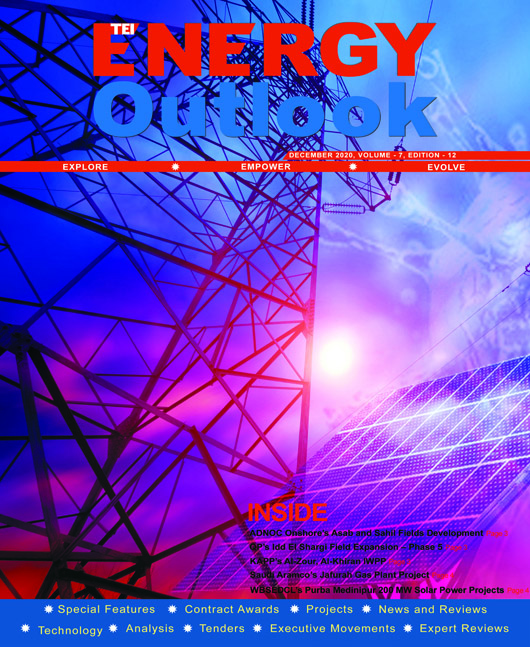
Power Projects Gather Pace
The Covid-19 pandemic has severely affected the global economy and financial markets. The Middle East and North Africa (Mena) power sector has also witnessed significant downturn in the first half of 2020.
The pandemic led to a decline in power demand and spending on power projects. Value of Mena project awards in H1 fall to $5.9bn, down 9.9% on the same period in 2019.
Nevertheless, as the path to recovery from the pandemic gathers pace, the regional power projects market scenario looks bright.The key power projects that moved ahead include renewable and power transmission and distribution projects.
This year, nearly all countries in the Mena region had set ambitious renewable energy target with nearly $76bn worth of projects planned or underway. The region is demonstrating its resolve to make progress with the targeted clean energy capacity. Egypt, Saudi Arabia, Morocco and the UAE have some of the region’s largest renewable energy programmes.
Abu Dhabi’s EWEC signed a power purchase agreement (PPA) for the Al-Dhafra solar independent power project (IPP), which is set to be the largest solar power plant in the world. It will generate 2GW of electricity. In Dubai, a consortium led by Acwa Power has reached financial close for the planned $564mn 900MW fifth phase of the Mohammed bin Rashid solar park.
Abu Dhabi National Energy Company (Taqa), meanwhile, confirmed that the planned 2.4GW Fujairah F3 IPP had reached financial close. The client expects to procure early power from the plant by the summer of 2022, while full generation commencement is expected by the summer of 2023.
The UAE’s Barkah nuclear project recently started up its first unit. The $24.4bn development is expected to add 5.6GW of capacity to the grid when fully operational, meeting a quarter of the country’s energy needs by 2030.
Saudi aims to meet the rising demand for electricity with renewable and nuclear energy projects, such that 50% of all electricity generated comes from non-fossil fuels by 2040.
Riyadh plans $10bn Renewable Energy Programme with the capacity of 13GW. The solar power plants project under the programme is in bidding stage. The Kingdom’s first wind farm, 400MW Dumat Al Jandal, is being developed by a consortium led by France’s EdF Renewables and UAE-based renewables firm Masdar. It is expected to be completed in 2022.
The Kuwaiti government has announced plans to pursue the 1.5GW Al-Dibdibah solar photovoltaic plant as an IPP. Kuwait Ministry of Electricity and Water is set issue tender before the end of this year for the design consultancy package for the first phase of a total 6,000MW combined-cycle gas turbine power plant at Nuwaiseeb in Kuwait.
Also in this quarter, the Kuwait Authority for Partnership Projects (KAPP) has shortlisted bidders for the advisory role on its planned Al-Zour North phase 2&3 independent water and power project (IWPP) and the Al-Khiran 1 IWPP, with generation capacities of 2,700MW and 1,800MW, respectively.
In the previous quarter, Qatar state utility Kahramaa received proposals from three consortiums for the planned Facility E IWPP project, which will comprise a combined cycle power plant with a net power capacity of 2300MW. Also this year, France’s Total and Japan’s Marubeni committed to develop Qatar’s first large-scale solar IPP plant in Al Kharsaah, west of Doha. The $500mn facility aims to reach full operations in 2022, representing 10% of the country’s peak electricity demand.
In power transmission and distribution segment, multiple contracts have been awarded in H1, 2020. Oman Electricity Transmission Company (OETC) has awarded contracts worth $475mn to link the grids and facilitate the increased use of renewable energy resources as well.
As the economy recovers, the project activity across the region looks strong.
Editor